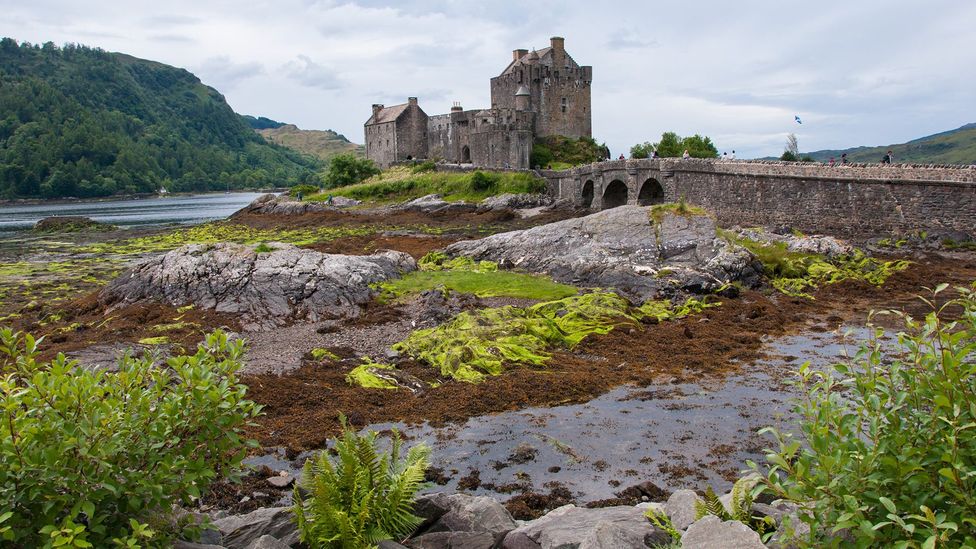
(Credit: Amanda Ruggeri)
Castle of dreams
Think of the most famous castles in Scotland, and Edinburgh or Balmoral might come to mind. But though the name of Eilean Donan doesn’t have the same resonance, images of it might. Dubbed “the most beautiful castle in Scotland”, Eilean Donan has been splashed on countless calendars, postcards and guidebook covers. With its weatherworn crenellations, tidal-island location and stone footbridge, the castle is the perfect symbol of romanticised medieval life.
It’s also one that would look far different today if it weren’t for the 20th-century restoration that returned it to its romantic glory – and, incredibly, that was partly based on the vivid dreams of a stonemason. (Credit: Amanda Ruggeri)
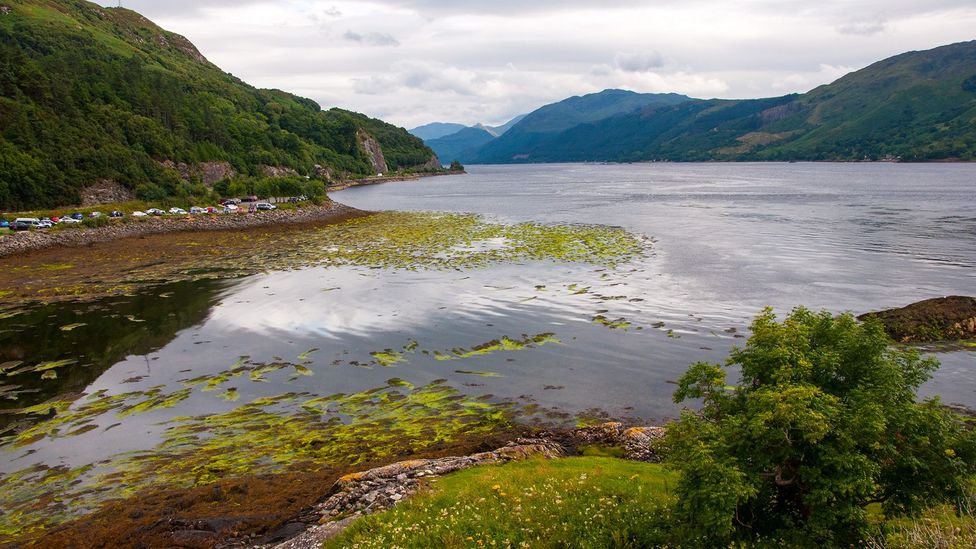
(Credit: Amanda Ruggeri)
Eilean Donan sits at the spot where three lochs meet before emptying out to sea. The Isle of Skye lies just beyond.
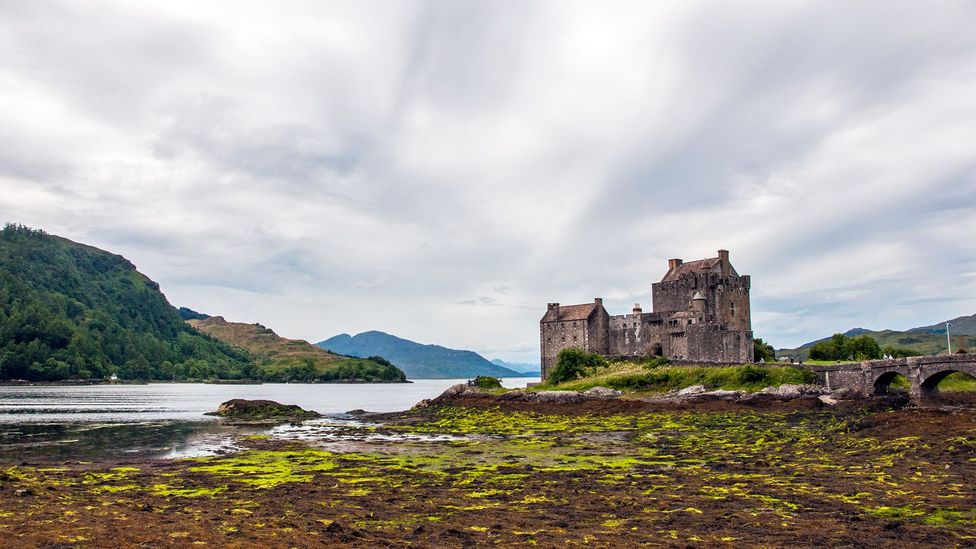
(Credit: Amanda Ruggeri)
Otter island
The stories of how Eilean Donan came to be are as romantic as the castle itself. One legend holds that both the island and the castle got their name from the 7th-century Christian saint St Donnan, who established a following in the area. (He was later beheaded, along with 52 of his followers, by pirates while saying Mass).
Another story is connected to the wildlife of the lochs, where visitors often get glimpses of otters and even dolphins. According to the tale, the name Eilean Donan came from the Gaelic word for brown dog – cu-donn – which was the name of the king of the otters. When the otter king died, he was buried on the isle and the castle’s foundations were later laid over his tomb. (Credit: Amanda Ruggeri)
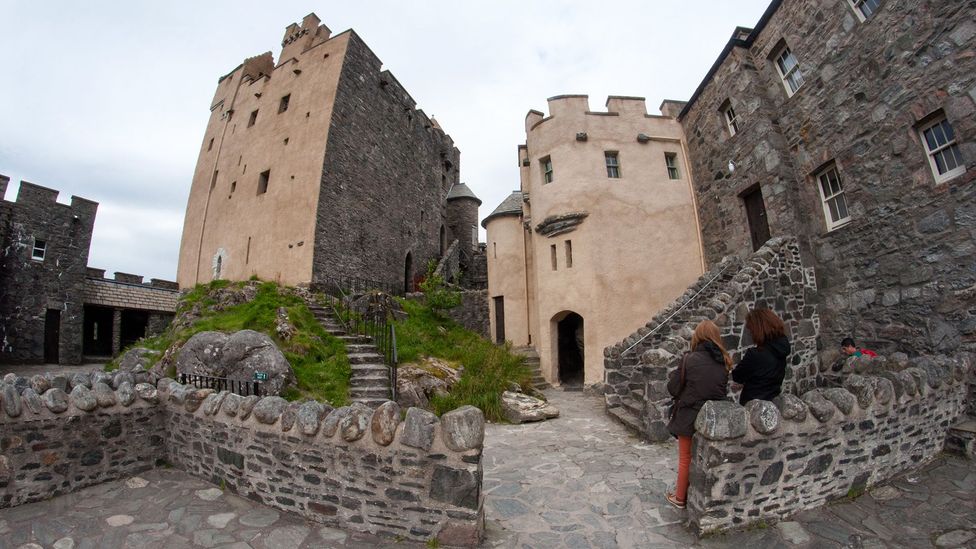
(Credit: Amanda Ruggeri)
Playing defence
Legends aside, what we do know is that the castle was constructed in the early 13th Century as a bastion against Viking raiders. At the time, the Norwegians controlled the nearby Hebrides islands and would make frequent incursions further inland. It’s thought that King Alexander II of Scotland, in an attempt to defend the area, gave his blessing to fortify the tiny, tidal island of Eilean Donan.
Parts of the original castle can still be seen today – like the wall on the right of the courtyard, shown here. But much of the castle’s medieval history, like its ancient origins, remains unknown. (Credit: Amanda Ruggeri)
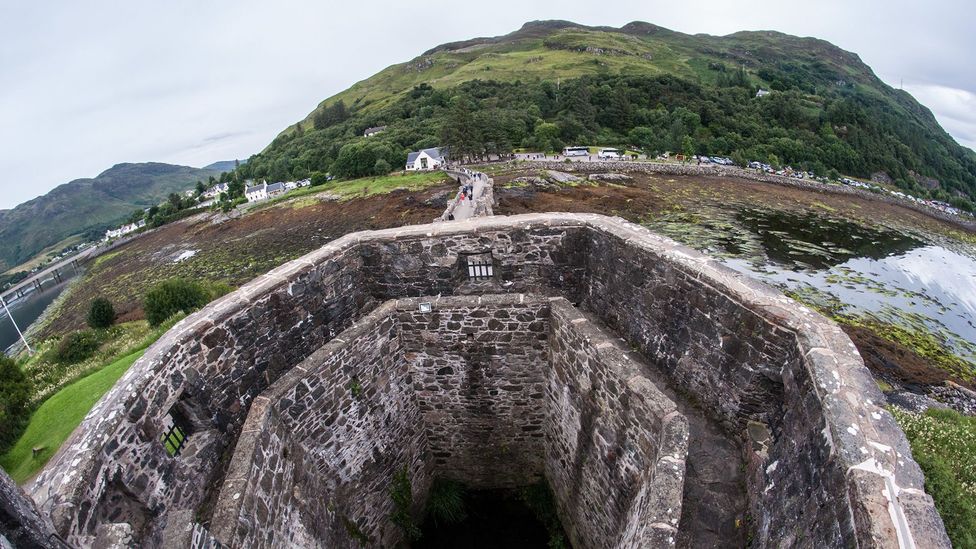
(Credit: Amanda Ruggeri)
Strange structure
One of the island’s most distinctive structures is its hornwork, which was added to Eilean Donan in the 1500s. This platform for cannons is a reminder that – no matter how picturesque the castle seems today – its original purpose was explicitly military. Facing the land, and with the rest of the castle surrounded by the lochs, the cannons’ placement would have made the castle all but impossible to invade. (Credit: Amanda Ruggeri)
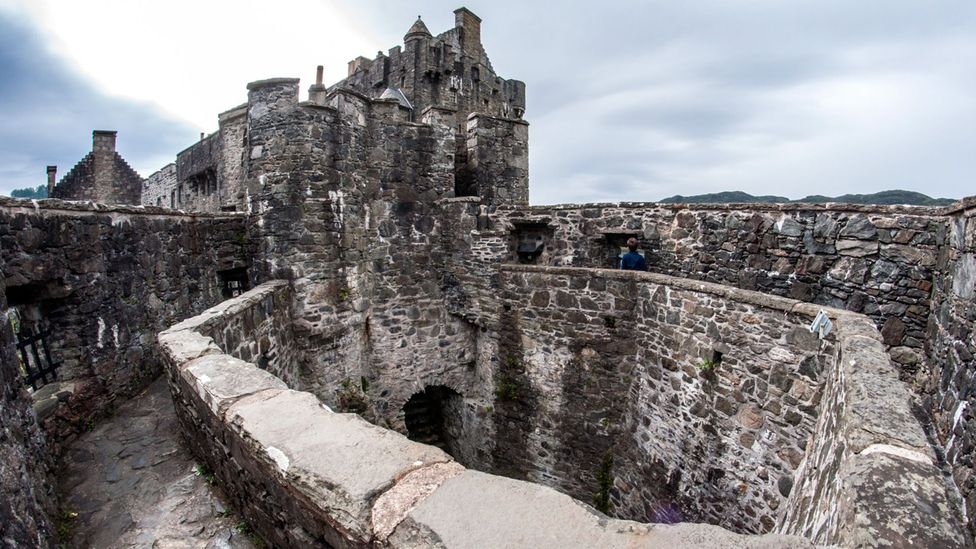
(Credit: Amanda Ruggeri)
From rebellion to ruin
In fact, one of the best-documented episodes in Eilean Donan’s history was the same one that almost destroyed it forever. In 1719, during the still-smouldering rebellion against the English crown, the castle briefly served as a stronghold for a Spanish garrison supporting the Jacobites. After one of the soldiers fired on the English, the ships bombarded – and all but demolished – the castle. It was left a crumbling skeleton, nothing like the powerful fortress it had been.
The castle would have remained in ruins indefinitely were it not for the Macrae-Gilstrap family, who purchased it in 1911. At first, they planned to keep it the way it was. But then they hired Farquhar MacRae, a local clansman, to help clear away the rubble. (Credit: Amanda Ruggeri)
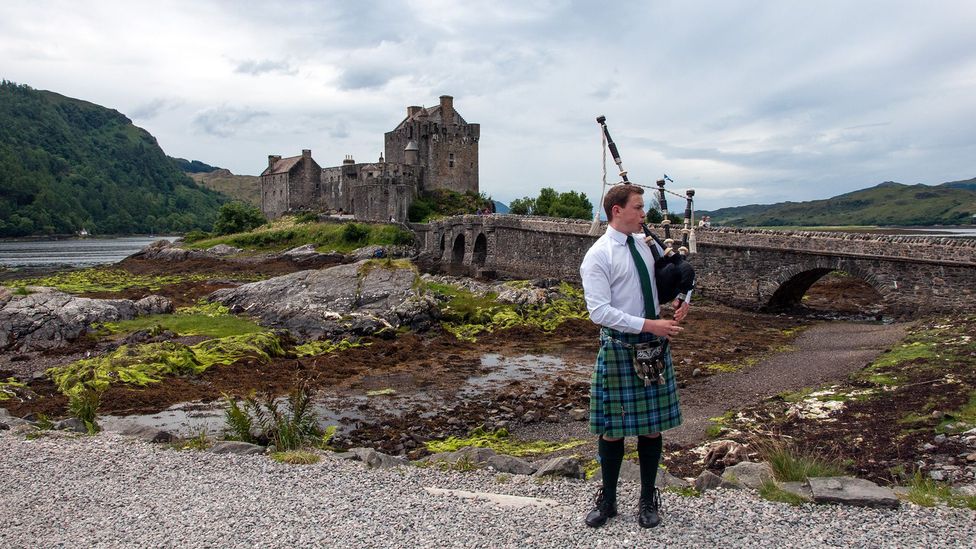
(Credit: Amanda Ruggeri)
The story goes that, shortly before he began work, Farquhar had a strange dream. He envisioned the castle at the peak of its glory, its courtyards and towers laid out in great detail.
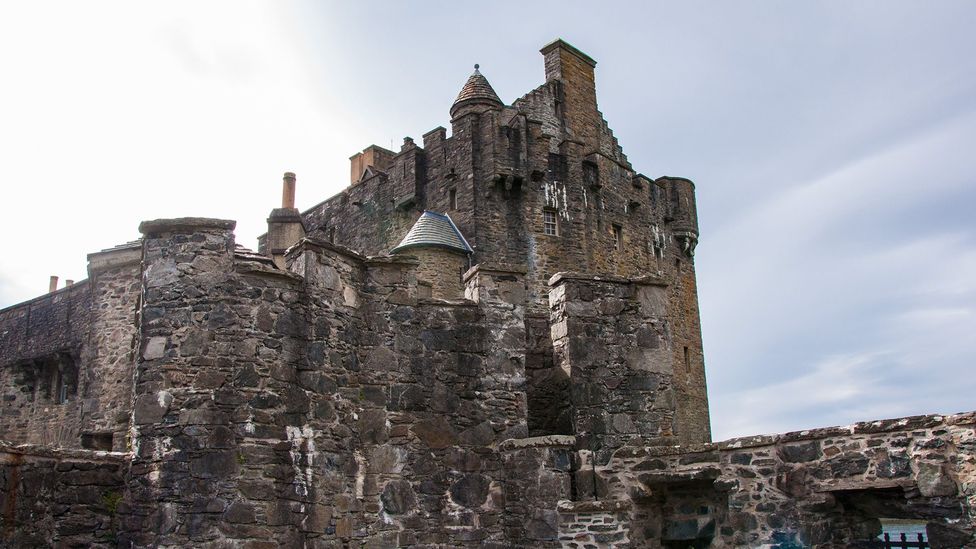
(Credit: Amanda Ruggeri)
Pretty pageantry
It’s said that Farquhar’s dream shaped the resulting restoration. In a bizarre twist, the story continues that a 1714 architectural survey, discovered nearly at the end of the 16 years of construction, was strangely close to what Farquhar had envisioned.
The truth is a little less fantastic. In actuality, the 20th-century reconstruction is more elaborate and romantic than the medieval castle of the 18th-century survey, leading architecture historian John Gifford to call it “a rubbly Edwardian stage-set for life in the Middle Ages”.
But not all of the changes from the reconstruction were purely ornamental. (Credit: Amanda Ruggeri)
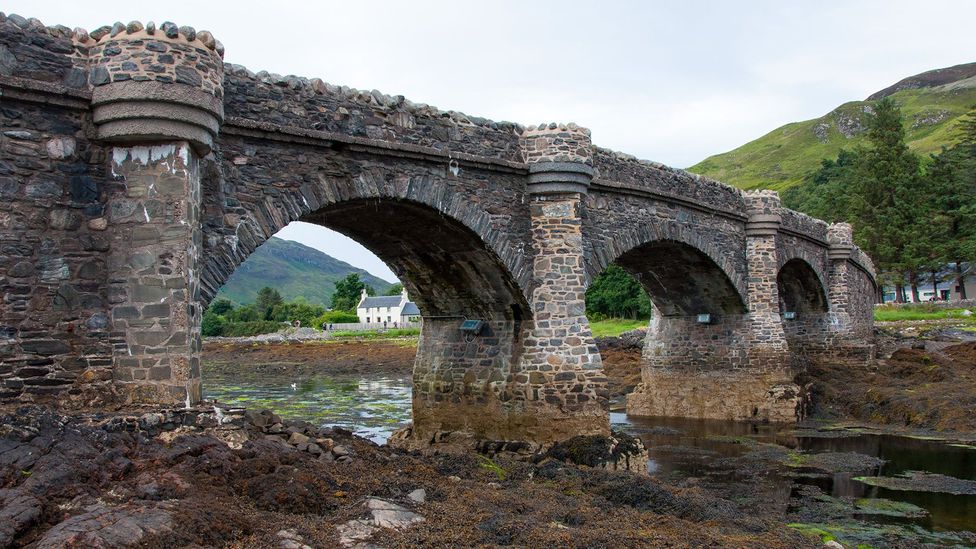
(Credit: Amanda Ruggeri)
Bridging the gap
The original castle was built on a tidal island at the juncture of lochs Duich, Long and Alsh. That meant it was accessible at high tide only by boat. In fact, the original castle would have had a sea gate – meaning the way most people arrived and left would have been from the loch, a not uncommon way to travel during the Middle Ages when roads were scarce.
By the time of the reconstruction, though, that was no longer the case. And so one of the project’s more practical – though still picturesque – additions was the bridge, shown here. (Credit: Amanda Ruggeri)
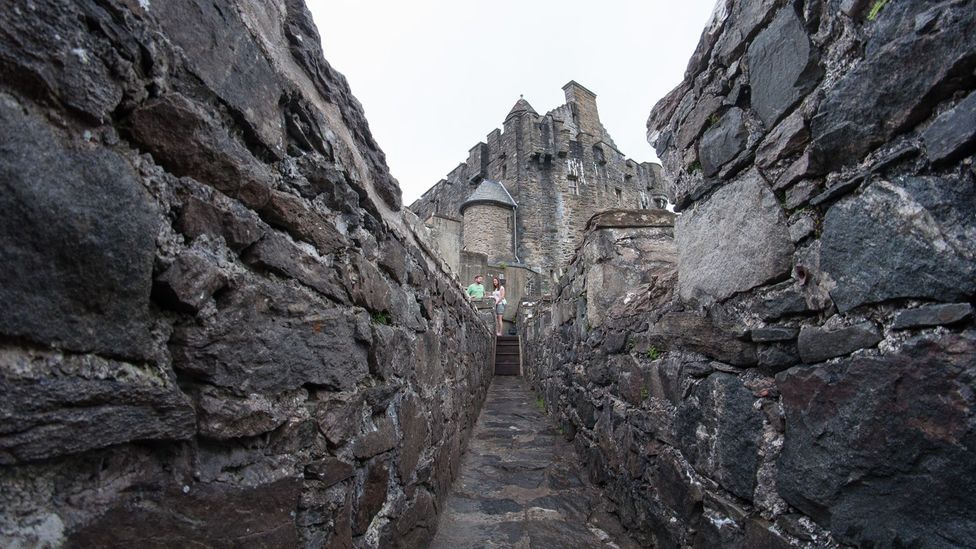
(Credit: Amanda Ruggeri)
Island inspiration
Sadly, Farquhar died before he saw his vision completed. But he never could have foreseen how famous the rebuilt castle would become – no matter how historically accurate its reconstruction. In the years since, it’s appeared in multiple movies, including the 1999 James Bond film The World is Not Enough and the 2007 film Elizabeth: The Golden Age. Most famously, it was the inspiration for the Disney Pixar team that created Brave in 2012. (Credit: Amanda Ruggeri)